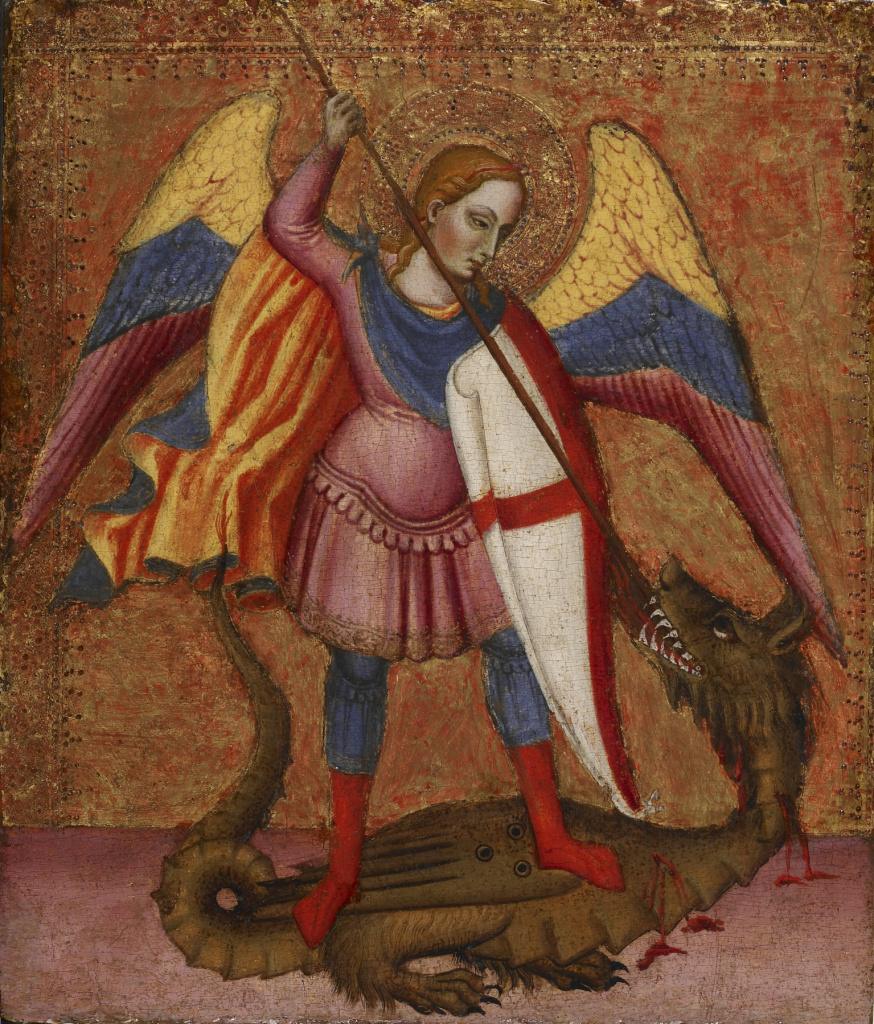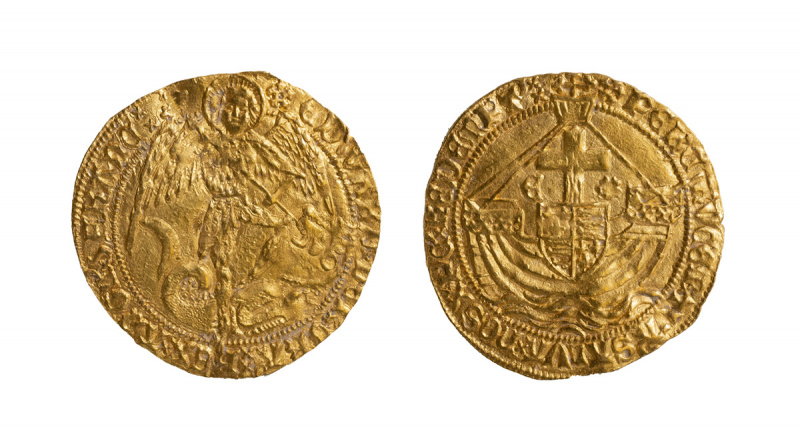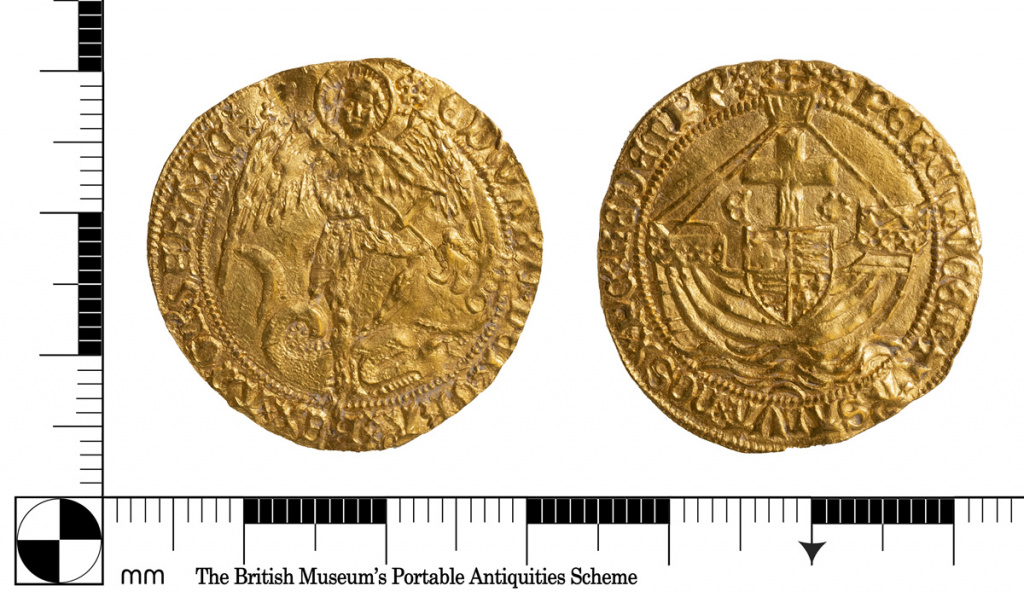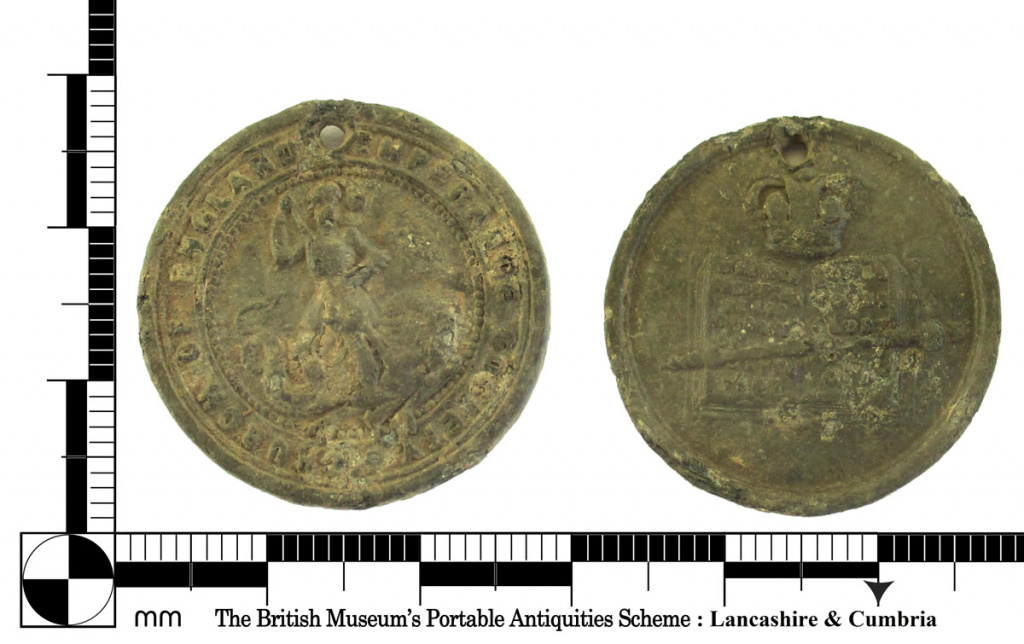PAS Finds (w/e 02/06/23) – Dragon Slayer
PAS Finds (w/e 02/06/23) – Dragon Slayer
My selection of the detecting finds recorded at the PAS during the week ended 2 June 2023.
Dragon
Two finds this week, produced some 400 years apart, share a similar image of a hero slaying a dragon.
This theme can be found in many cultures: Apollo kills Python in Greek mythology, Seth battles with Apopis in ancient Egypt, in Norse mythology Thor’s nemesis is the World Serpent Jörmungandr and the Hindu god Indra slays the dragon Vritra.
The Christian tradition comes from the Book of Revelation Chapter 12:
7 Then war broke out in heaven. Michael and his angels fought against the dragon, and the dragon and his angels fought back.
8 But he was not strong enough, and they lost their place in heaven.
9 The great dragon was hurled down—that ancient serpent called the devil, or Satan, who leads the whole world astray. He was hurled to the earth, and his angels with him.
— Revelation 12:7–10 (NIV)

This is a late 14th century painting of Archangel Michael slaying the Dragon.
Michael standing on the dragon symbolises the victory of good over evil; the dragon’s wings are immobilized whilst the angel’s wings extend beyond the the punched border of the gold background.
Finds
Gold angel of Edward IV
A gold angel of Edward IV’s second reign (1471-1483) with E and Rose by ship’s mast. This is the first example of this coin type recorded from Sussex and only the second from the south-east of England. Hence, it is a find of note of regional importance.
The angel had been introduced by Edward in 1465 during his first reign.
Church of England Temperance Society Medal

This better example more clearly shows the design of the medal. On the obverse is Saint George slaying the dragon with the inscription “Church of England Temperance Society”.
On the reverse is a bible crossed by a sceptre with the words “Whether therefore ye eat, or drink, or whatsoever ye do, do all to the glory of God.” which is from Corinthians 10:31.
When the temperance movement first came across from America in the late 1820s the Church of England wasn’t that enthusiastic although individual clergy did embrace it. In 1861 a small number of them met to form the Church of England Abstinence Society. This soon changed to the Church of England Temperance Society or CETS. This reflected their unique difference in ideology from the teetotal societies in the rest of the temperance movement; CETS claimed drinking in moderation was the superior position to total abstinence.1
Probationary service
In 1876 a printer called Mr Rainer went to court on business and saw how little help the prisoners received. He wrote to CETS to suggest they help and enclosed five shillings to help start a fund. This became known as the Police Court Mission and this became the origin of the modern probationary service.
References
- Shiman, Lilian L. “The Church of England Temperance Society In the Nineteenth Century.” Historical Magazine of the Protestant Episcopal Church 41, no. 2 (1972): 179–95. http://www.jstor.org/stable/42973345.



